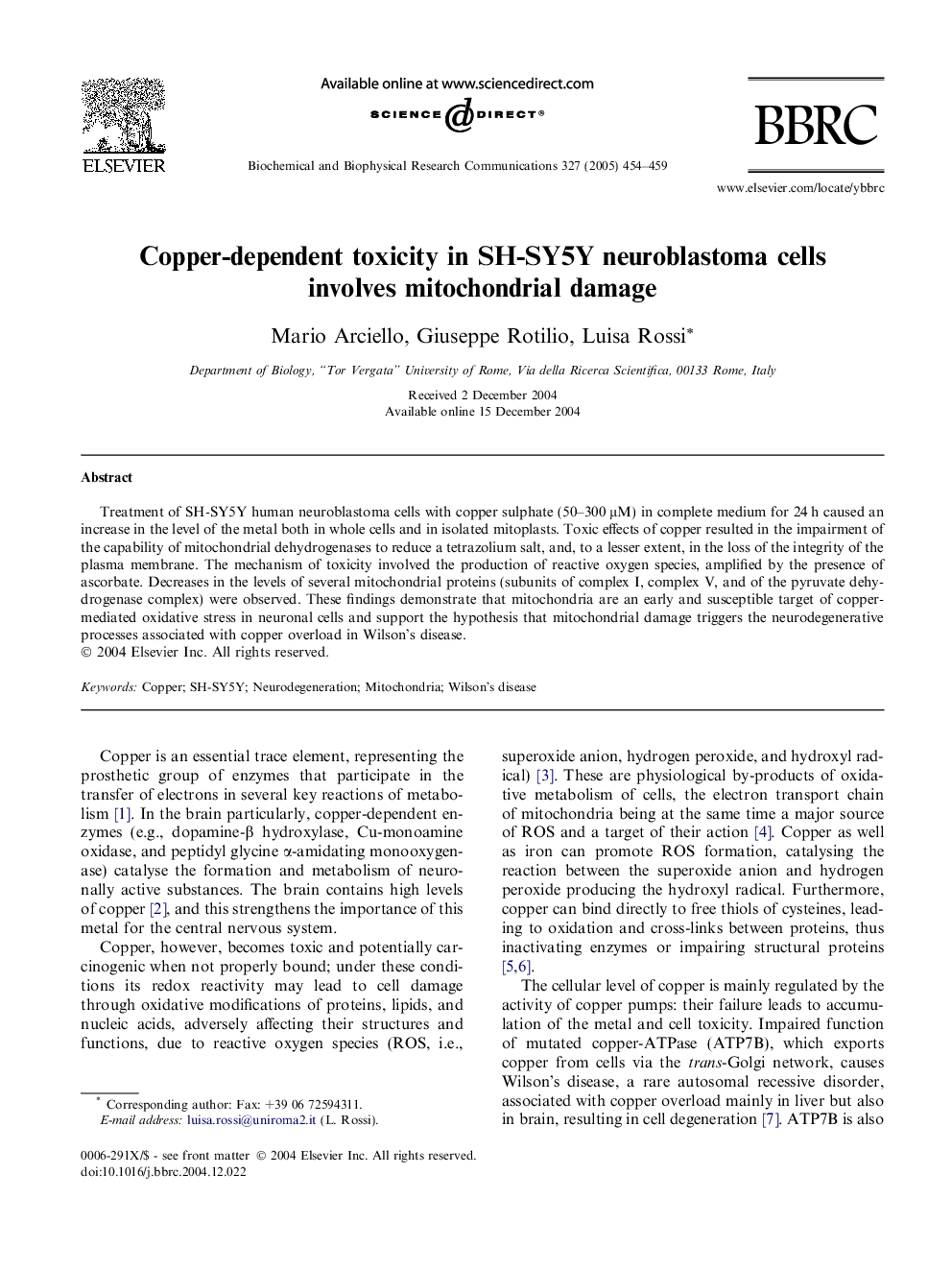| Article ID | Journal | Published Year | Pages | File Type |
|---|---|---|---|---|
| 10771891 | Biochemical and Biophysical Research Communications | 2005 | 6 Pages |
Abstract
Treatment of SH-SY5Y human neuroblastoma cells with copper sulphate (50-300 μM) in complete medium for 24 h caused an increase in the level of the metal both in whole cells and in isolated mitoplasts. Toxic effects of copper resulted in the impairment of the capability of mitochondrial dehydrogenases to reduce a tetrazolium salt, and, to a lesser extent, in the loss of the integrity of the plasma membrane. The mechanism of toxicity involved the production of reactive oxygen species, amplified by the presence of ascorbate. Decreases in the levels of several mitochondrial proteins (subunits of complex I, complex V, and of the pyruvate dehydrogenase complex) were observed. These findings demonstrate that mitochondria are an early and susceptible target of copper-mediated oxidative stress in neuronal cells and support the hypothesis that mitochondrial damage triggers the neurodegenerative processes associated with copper overload in Wilson's disease.
Related Topics
Life Sciences
Biochemistry, Genetics and Molecular Biology
Biochemistry
Authors
Mario Arciello, Giuseppe Rotilio, Luisa Rossi,
